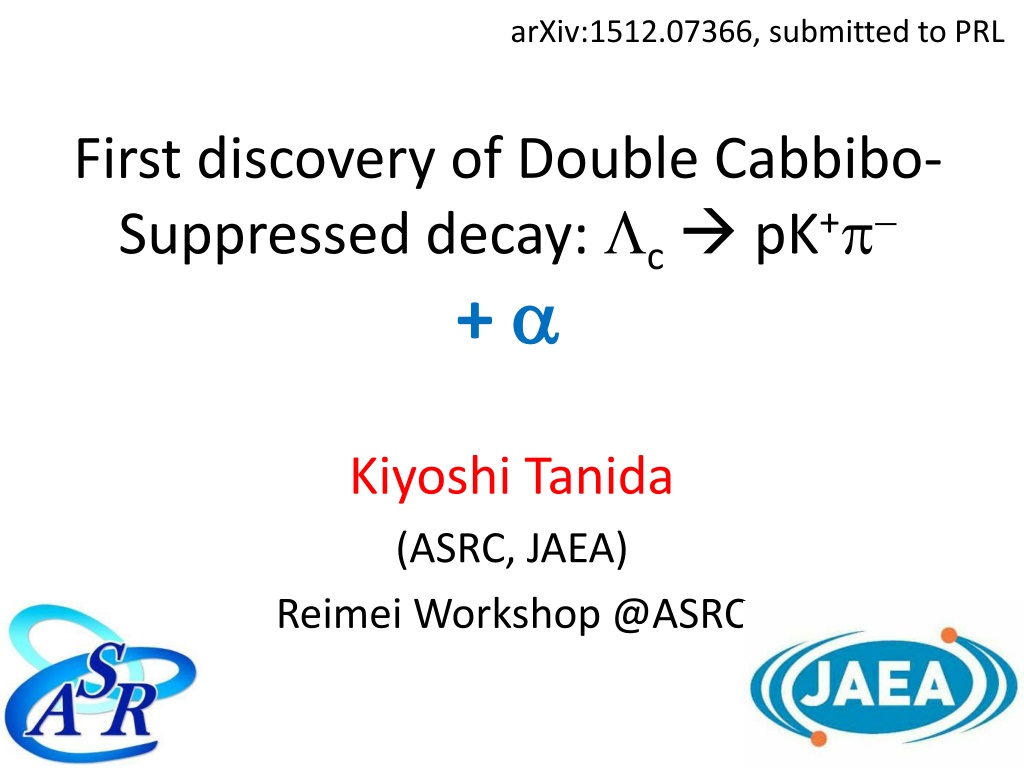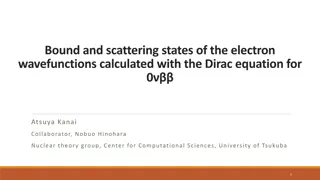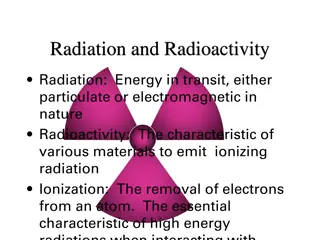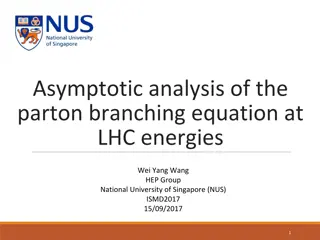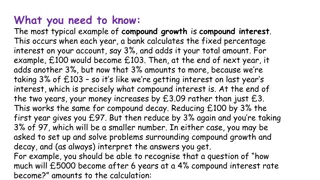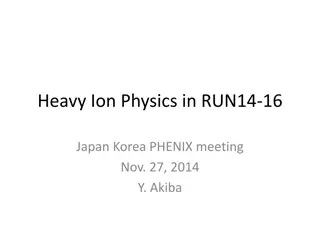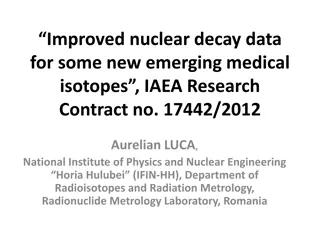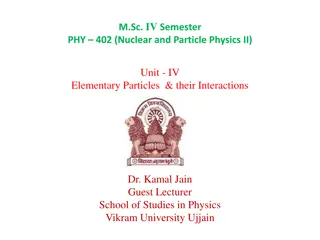Double Cabibbo-Suppressed Decay in Charm Quarks
First discovery of double Cabibbo-suppressed decay in charm quarks, observed in D mesons, with significant signal observed in experiments like FOCUS and Belle. The weak decay amplitude reflects the structure and decay dynamics, challenging naive expectations. Analysis strategies involve precise branching ratio measurements and cancellation of systematic errors for accurate results.
Download Presentation

Please find below an Image/Link to download the presentation.
The content on the website is provided AS IS for your information and personal use only. It may not be sold, licensed, or shared on other websites without obtaining consent from the author.If you encounter any issues during the download, it is possible that the publisher has removed the file from their server.
You are allowed to download the files provided on this website for personal or commercial use, subject to the condition that they are used lawfully. All files are the property of their respective owners.
The content on the website is provided AS IS for your information and personal use only. It may not be sold, licensed, or shared on other websites without obtaining consent from the author.
E N D
Presentation Transcript
arXiv:1512.07366, submitted to PRL First discovery of Double Cabbibo- Suppressed decay: c pK+ + Kiyoshi Tanida (ASRC, JAEA) Reimei Workshop @ASRC
Double Cabbibo-suppressed decay Weak decay amplitude of a charm quark c s: cos c~ 1 d: sin c~ 0.23 Cabbibo suppression At the same time, emitted W decays into a qqbar pair ? ?: cos c ? ?: sin c So, the decay ? (??) ? is twice suppressed Double Cabbibo-suppressed decay Naively, decay branch is O(tan4 c) ~ 0.28% smaller compared to counterpart (? ?? ?)
Example DCS decays Several decays are observed for D mesons D+ K+ + BR(K+ + )/BR(K + +) =(5.77 0.22) 10-3 2tan4 c D0 K+ BR(K+ )/BR(K +) =(3.37 0.21) 10-3 1.2tan4 c Can be quite different from na ve expectation, reflecting structure and/or decay dynamics NEVER observed for baryons BR( c pK+ )/BR( c pK +) < 0.46% (90%CL) by FOCUS
+ ??+? ? u d u + ??+? ?? ? + ?? ?+ ?? u d c + ? ? d ? W+ u ? ?+ FOCUS group, PLB 624 (2005) 166-172 Yield of + ??+? + ?? ?+ Yield of c ? FOCUS ~ 3000 (after event selection) ~ 10 (expected) BELLE ~ 800,000 ~ 2000 (expected) 4
Possible diagrams Exchange Spectator Not available in DCS decays
Belle experiment Almost 4 , good momentum resolution ( p/p 0.1%), EM calorimeter, PID & Si Vertex detector
Huge statistics, good quality + ?? ?+ c 1.5 M events reconstructed
Analysis strategy Get the branching ratio wrt the CF counterpart, c + ?? ?+ + ??+? ) + ?? ?+) ? c + ??+? + ?? ? c ??( c ??( c + ?? ?++ ?? Strong cancelation in acceptance & efficiencies Small systematic error Each single particle (p, pbar, K+, K , +, ) appears once both in denominator and deliminator Single particle efficiencies cancel exactly Phase space is also the same
Number of Events + ?? ?+ + ??+? DCS: c CF: c (1.452 0.015) 106events 3587 380 events Significant signal observed!
Peaking background + ?+, ?? is a singly Cabbibo-suppressed decay having the same final state as DCS Suppressed by vertex cuts Contamination estimated by ?? invariant mass with relaxing vertex cuts 208 78 events c
Efficiency Dalitz plot Only significant systematic uncertainty Estimate efficiency on each point of DP Integrate for various distribution + ?? ?+Real data c Efficiency from MC
Sub-branches CF Branching Ratio *PDG2012 ?(??? ? ?????) ?(?? PDG branches + Phase space DCS Same as CF except ? 1520 Uncertainty CF: nominal vs weight from the real data DCS: nominal vs each sub-branch Maximum difference Efficiency ratio: 1.01 0.05 Sub Channel of CF decay, ?? + ?? ?+ + ?? ?+) ? ? (892)0; ? (892)0 ? ?+ ?(1232)++? ; ?(1232)++ ??+ ?(1520)?+; ?(1520) ?? ?? ?+ (non-resonant) 0.21 0.03 0.17 0.04 0.08 0.02 0.55 0.06
Result + ??+? ) + ?? ?+)= 2.35 0.27 0.21 10 3 ??( c ??( c Statistical significance: 9.4 Corresponds to (0.82 0.12)tan4?? Slightly smaller than na ve estimation Together with ?? c +0.21)%, + ?? ?+= (6.84 0.24 0.27 +0.07) 10 4 + ??+? = (1.61 0.23 0.08 ?? c The first observation of DCS decay in Baryon
+ ???+ Dalitz plot: c
Comparison with MC Real data MC K*(892) (1520) Quite a lot of difference PDG sub-branches seem wrong Interesting structure in non-resonant region Hint for another */ * resonance seen. (1670)?
Prediction from theory side Miyahara, Hyodo & Oset, PRC 92, 055204 (2015) (1670) (1670) is predicted, but
Hyperon spectroscopy in cdecay Interesting tool to study hyperon resonances Another example: *(1690) Now we have ~30 times more data + ??0?+ Belle collaboration PLB 524, 33 (2002) c
Spin With the high statistics, now we can determine spin in model independent way. Same method as for (Babar, PRL 97 (2006) 112001) Cascade process c+ ( ) + K+(1/2 J + 0), ( ) + K (J 1/2 + 0) Angular correlation If J=1/2 uniform 3/2 3cos2 h+1 c0 + K+, + K h c K+ K0
Parity In general, ( ) produced by cweak decay is polarized To the direction of ( ) (or opposite) in crest frame Polarization can be induced by other methods. For the case J=1/2, decay is either S-wave (P = ) or P-wave (P = +) You can distinguish those two cases by measuring polarization of in the final state S-wave: ? = ? , independent of decay angle P-wave: ? = ? ? 2? , depends on decay angle Parity of (1405) was determined recently, using this method by CLAS at Jlab. (Moriya et al., PRL 112 (2014) 082004)
Summary The first observation of doubly Cabbibo-suppressed decay of charmed baryon, ? Obtained Branching ratio: + ??+? + ??+? ) + ?? ?+)= 2.35 0.27 0.21 10 3 ??( c ??( c corresponding to (0.82 0.12)tan4??, is slightly smaller than na ve estimation. In the process, a hint of a narrow hyperon resonance is found in the Dalitz plot for c We now have enough data to determine JP (1690), c(2765): JPwill be determined soon. What else are interesting? + ?? ?+. (1670)?
